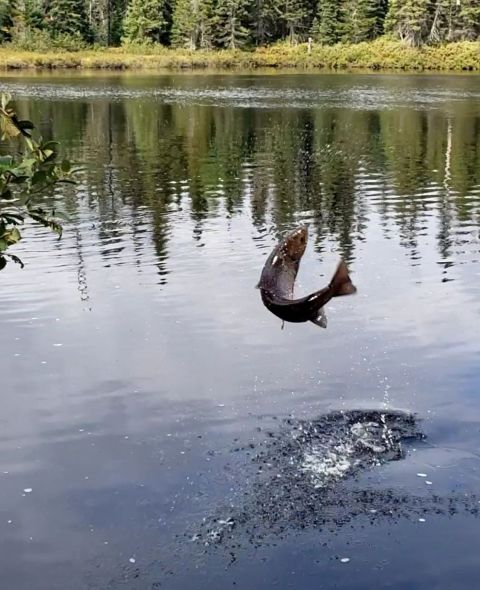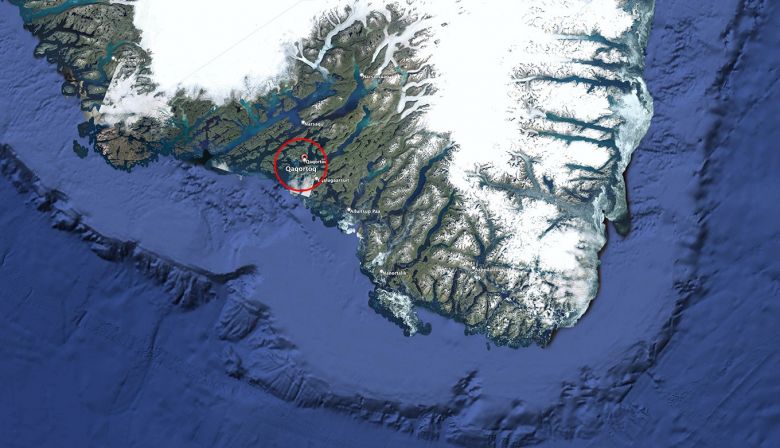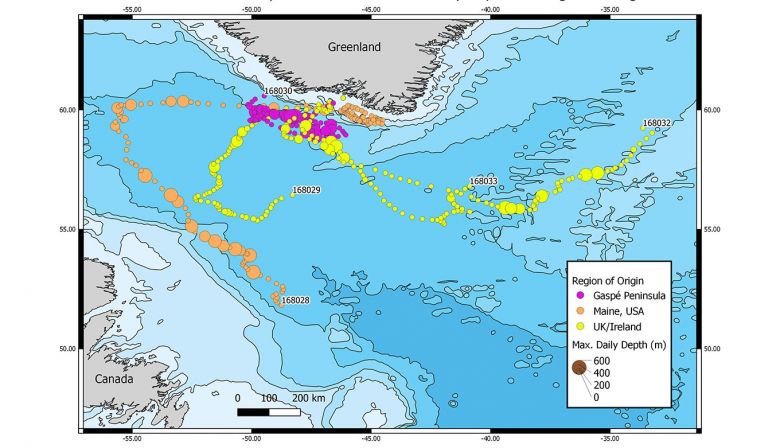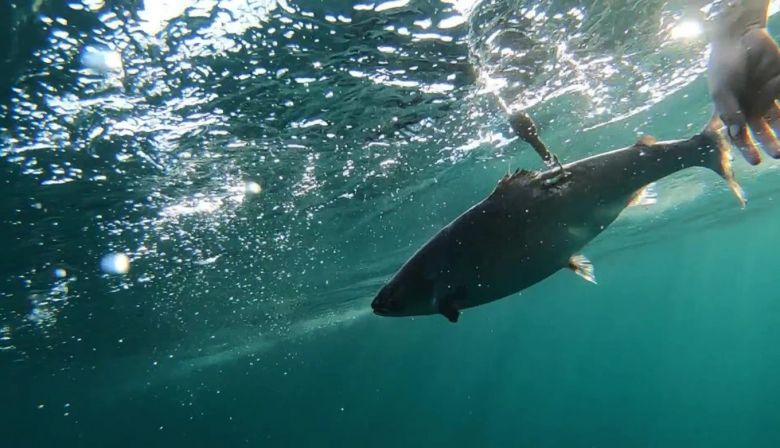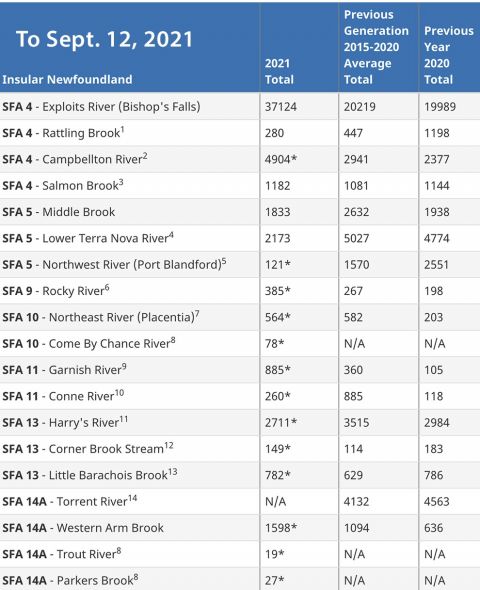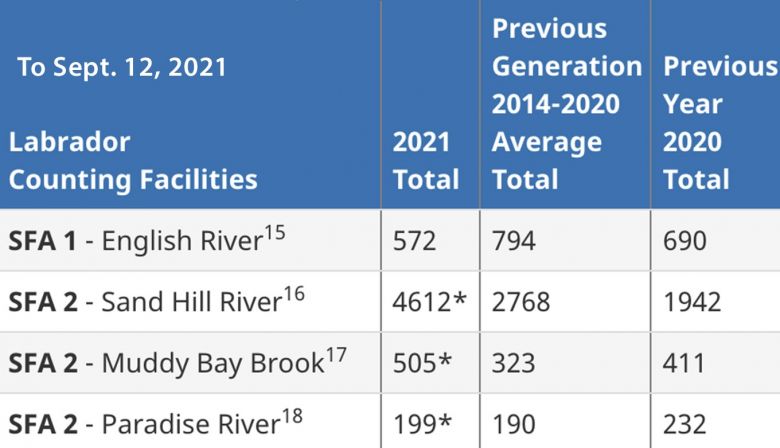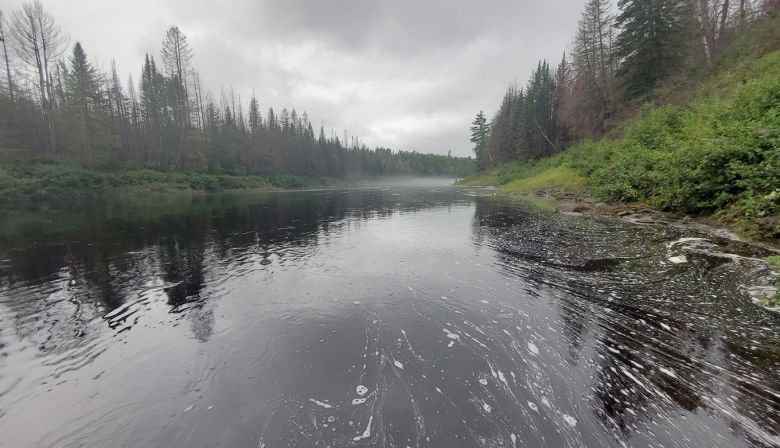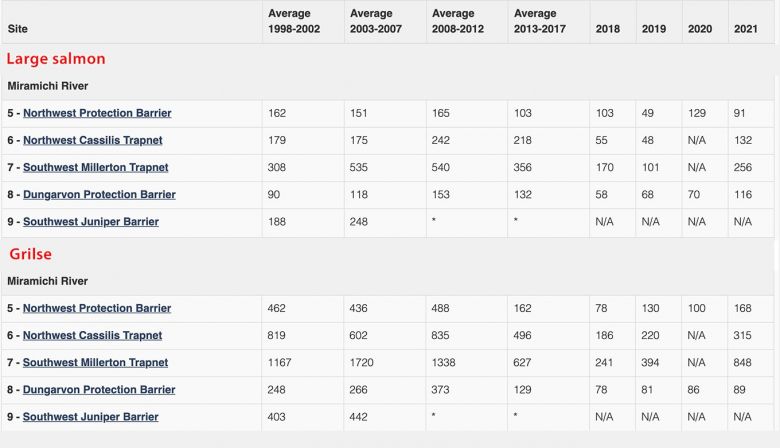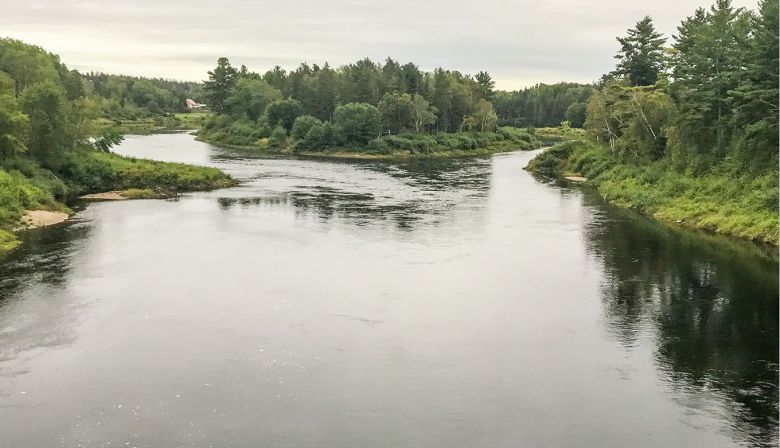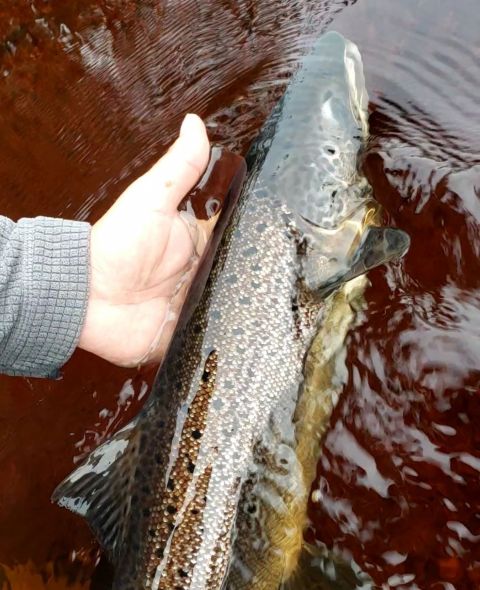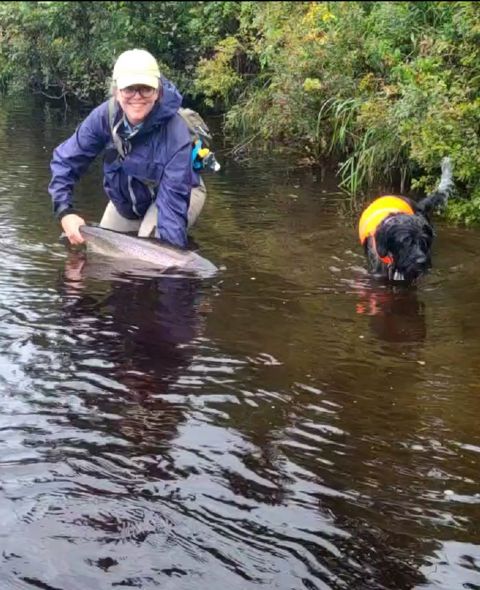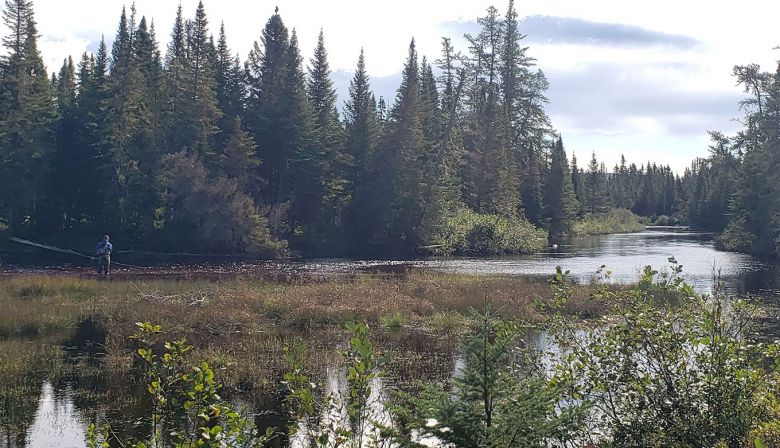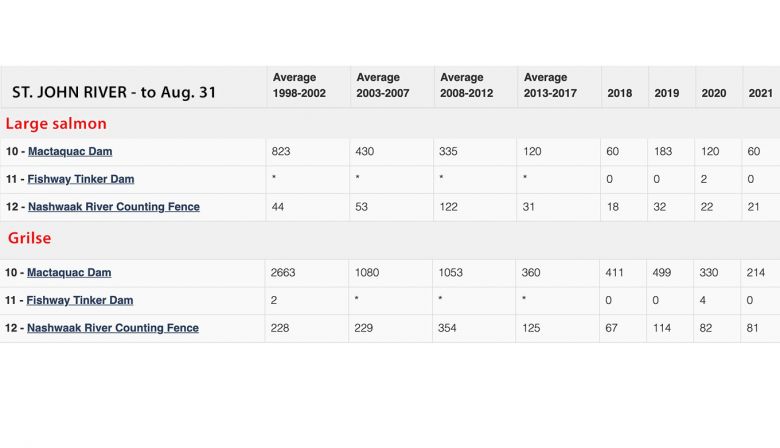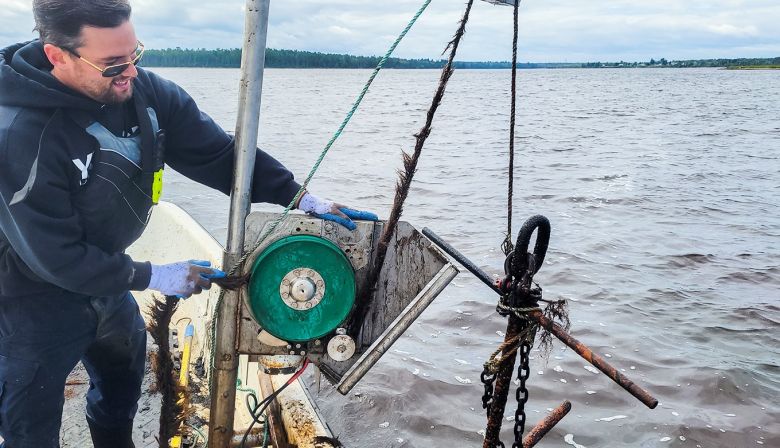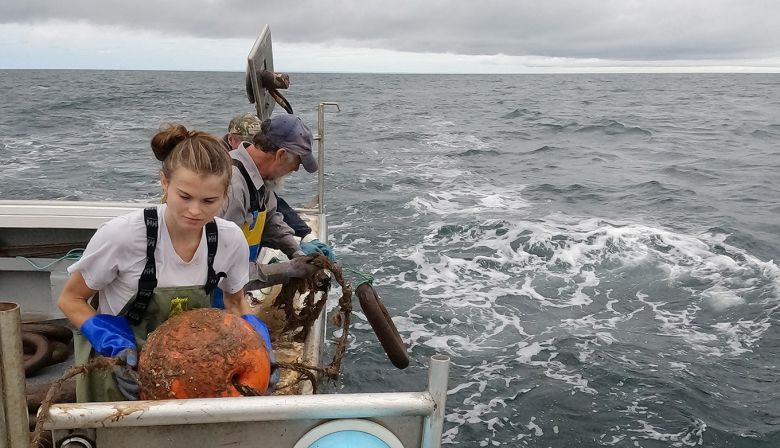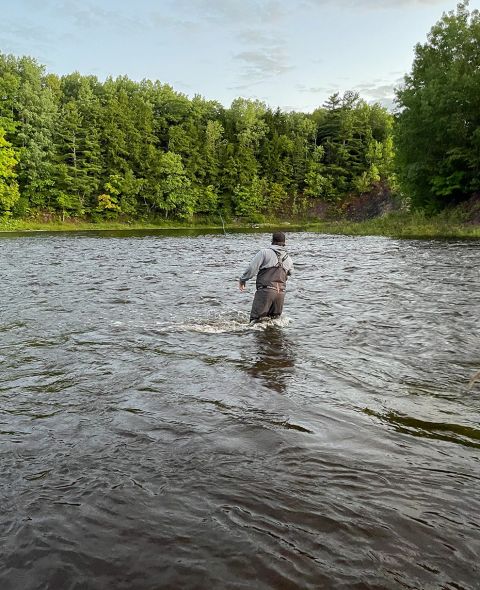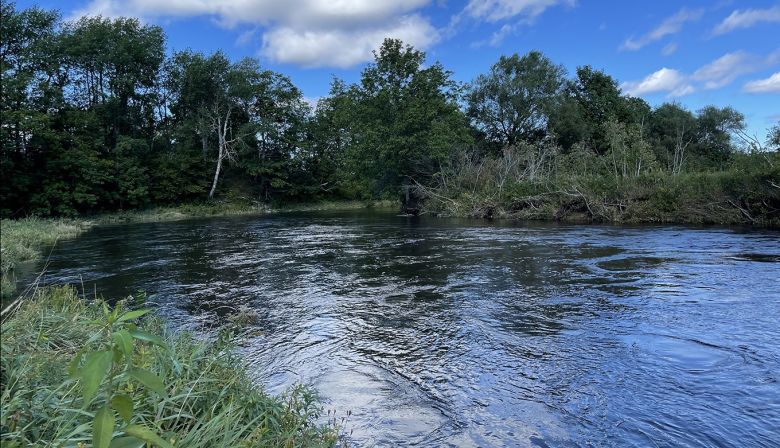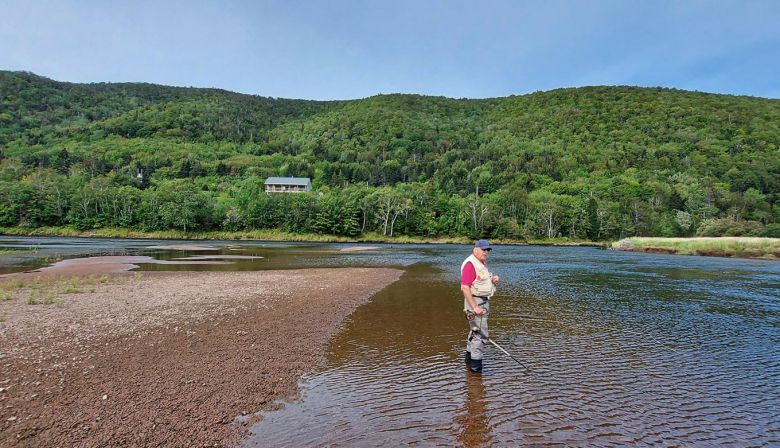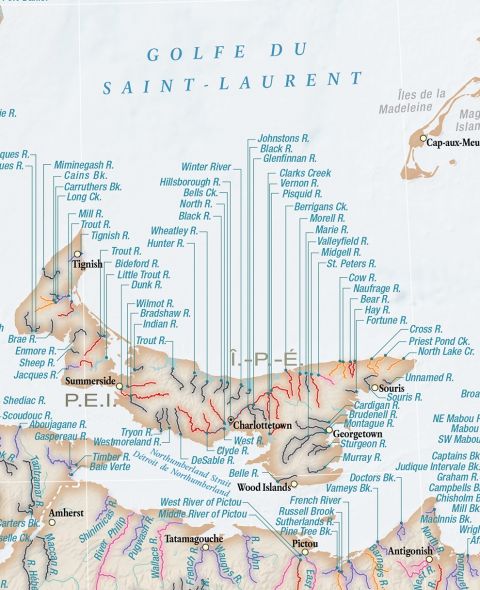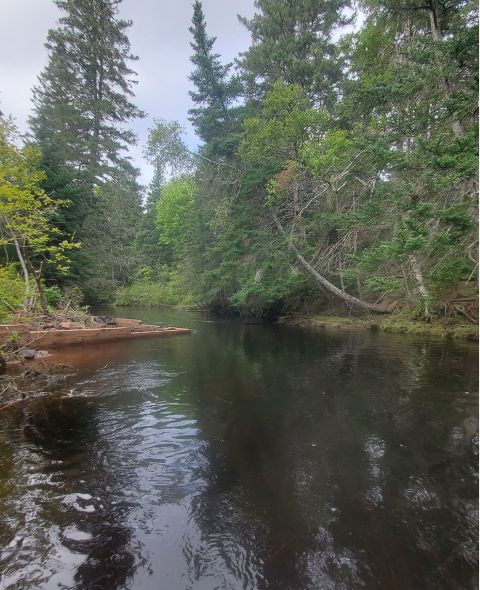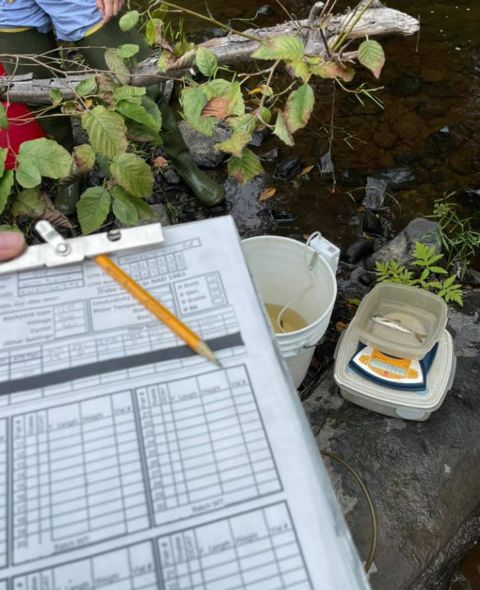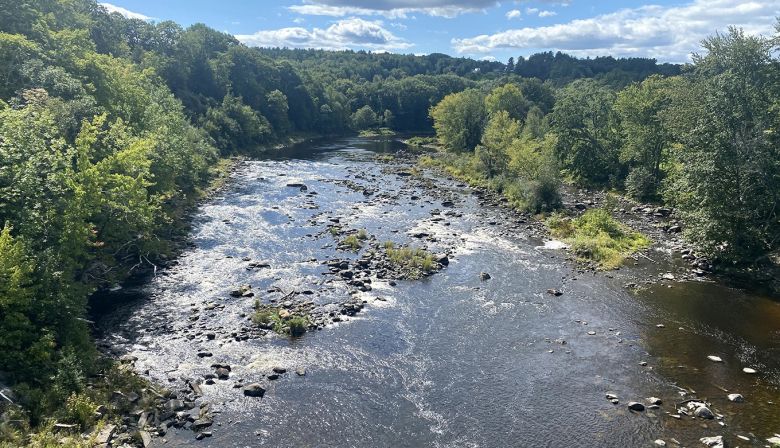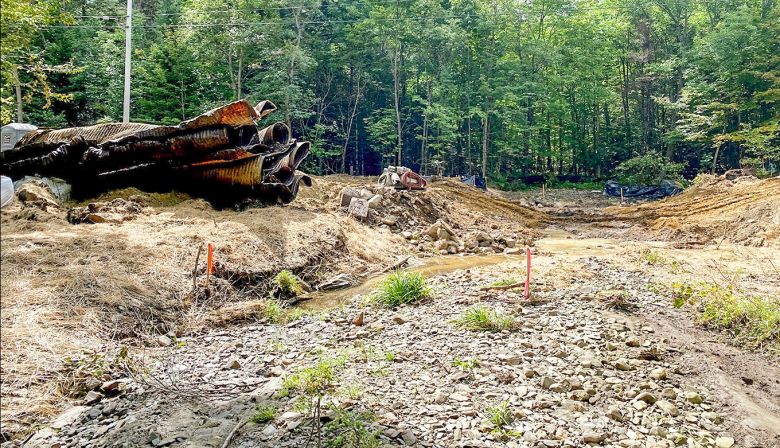Matapedia River
Of the 723 fish registered by the CGRMP up until September 14th, 368 have been released and 355 harvested.
To September 13th, 2020, for the season, a total of 1,247 fish were reported landed by anglers. Of those, 742 had been released and 505 harvested.
To September 16th, 2019, cumulatively, 1,170 fish had been reported landed (721 large salmon released, and 449 grilse harvested). That season, there was no harvest of salmon.
Mitis River
The new fish trap installed prior to the 2020 migration continued to be very effective and has performed very well during the different flow levels this angling season.
As of September 15th, 1,753 fish have been counted comprised of 751 salmon and 1,002 grilse. Sport anglers have landed
As of September 13th, 2020, 760 salmon and 758 grilse were counted for a total of 1,518 fish. On the angling side, 328 fish had been reported landed comprised of 133 released and 195 harvested.
To September 16th, 2019, 885 fish (457 large salmon and 430 grilse) were transported up above the natural waterfall. Also, to date, 104 large salmon have been released and 112 grilse had been reported harvested for a total of 216.
Bonaventure River
The Bonaventure ZEC (APSB) is reporting 1, 191 fish have been landed to September 11th (742 salmon released and 449 grilse harvested).
To September 12th 2020, 689 salmon had been released and 312 grilse harvested for a total of 1,001 landed.
As water conditions were very good, an in-river count was performed on September 11th and 12th 2020 (not the case as of September 15th 2021) resulted in 1,834 fish (1,531 salmon and 303 grilse) being observed and counted.
Compared to 1,412 fish counted (1,047 salmon and 365 grilse) resulted from the 2019 late season assessment.
Rimouski River
For the season on September 14th, 269 salmon and 439 grilse have been counted for a total of 708. At the same date in 2020, 680 fish had been counted made up of 478 salmon and 202 grilse migrating back to their natal river.
